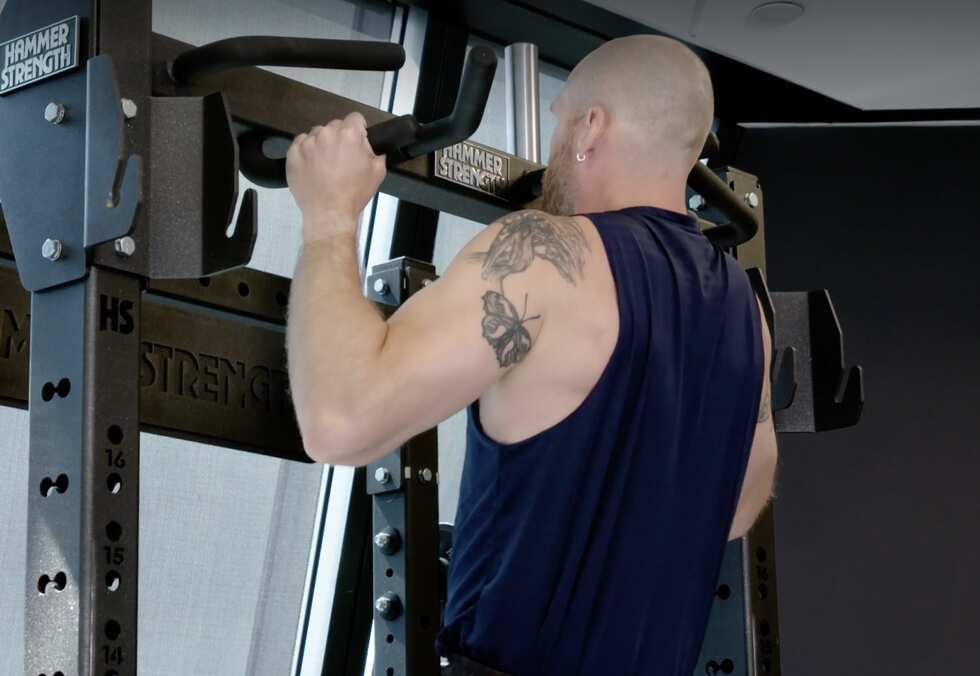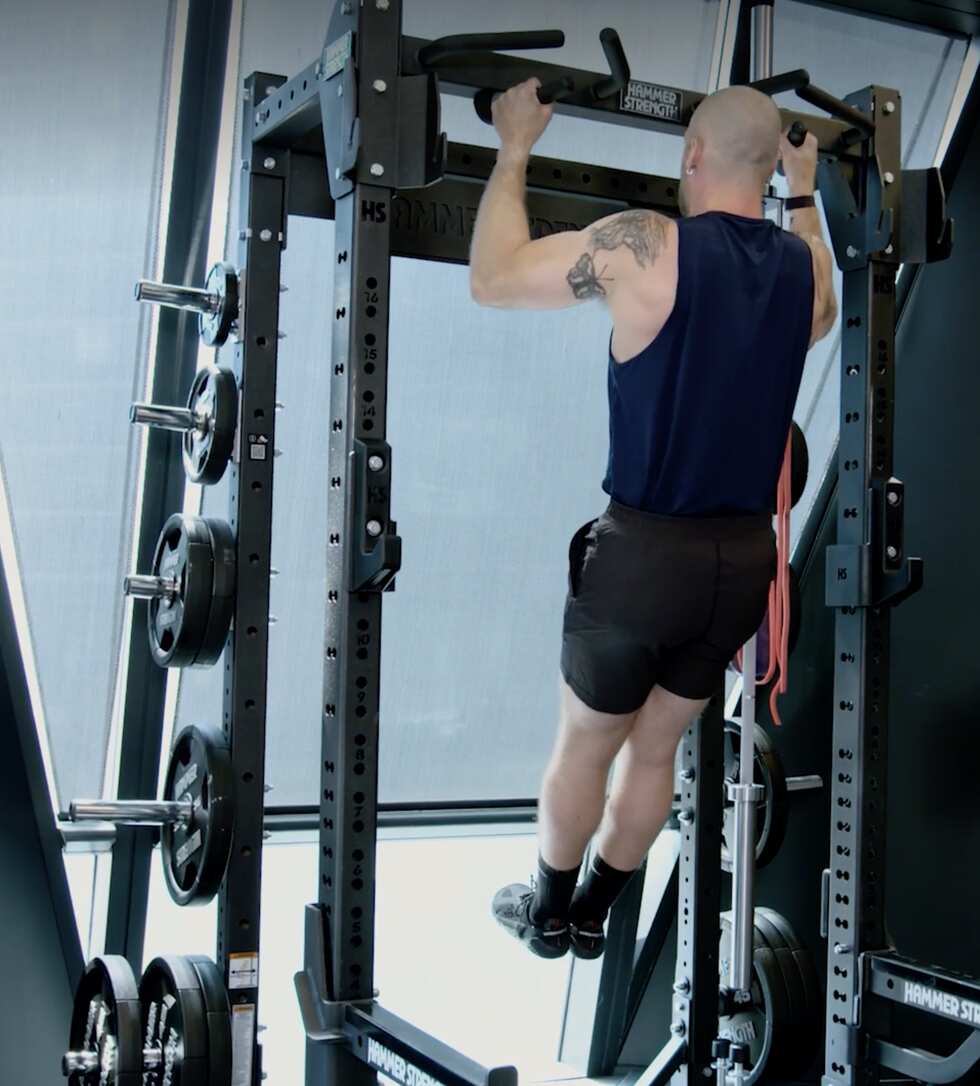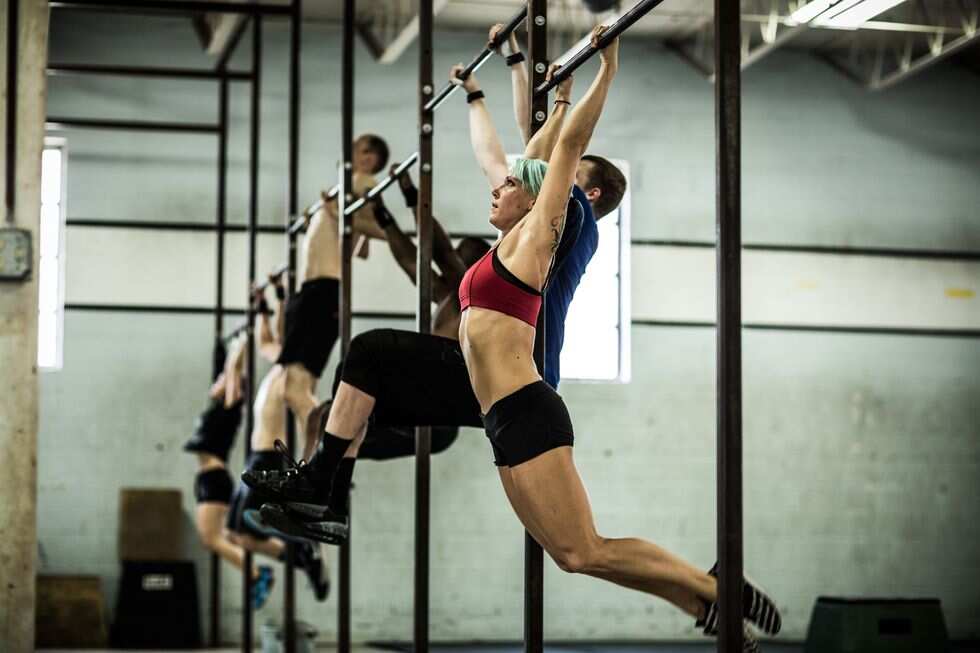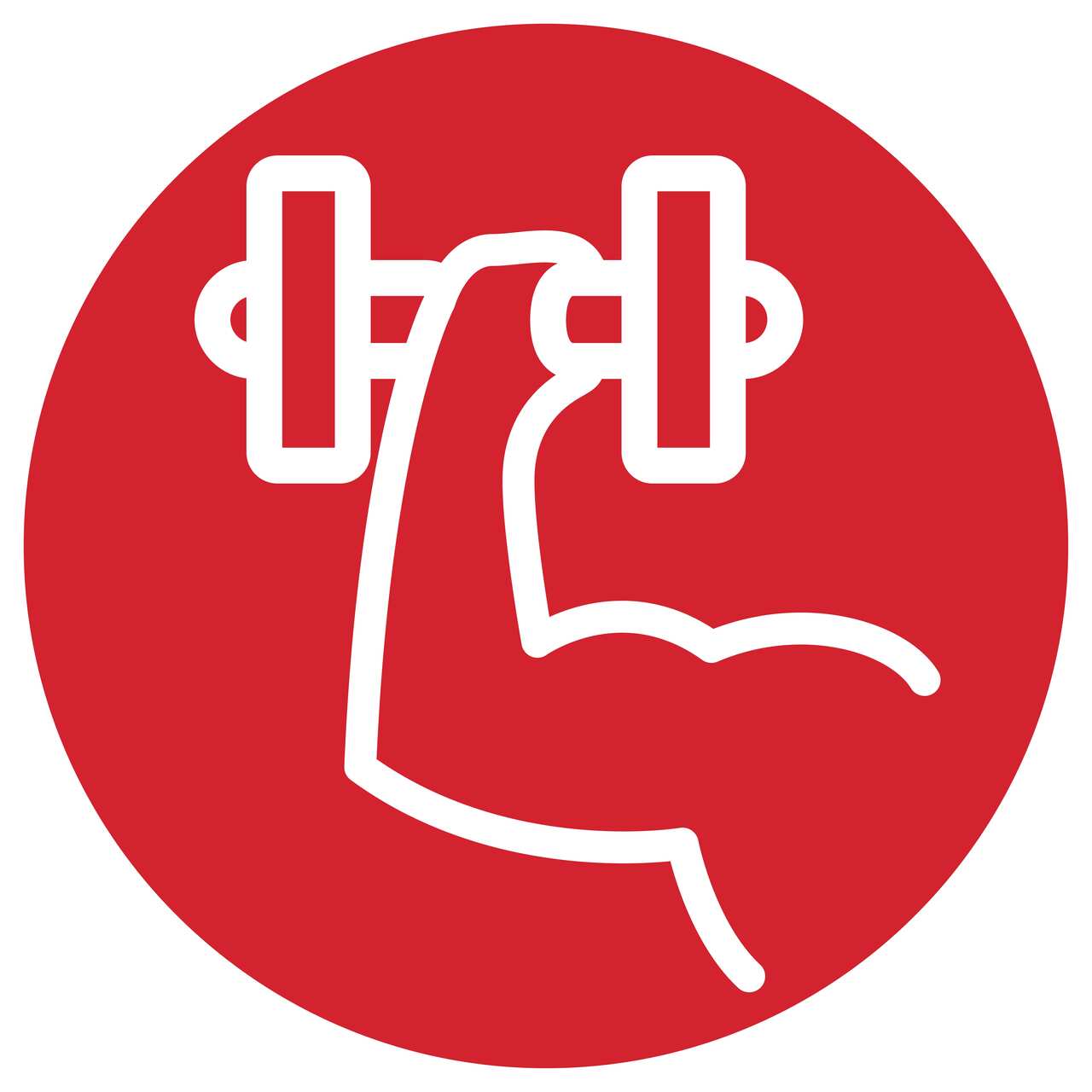THE PULLUP IS the apex of all bodyweight exercises. The movement is one of the few you can use to train your back muscles effectively without an external load and a pure expression of relative strength (how strong you are relative to your height and weight).
All of those factors also make the pullup one of the hardest exercises to do the right way. You're working against yourself, since you're literally lifting all of your bodyweight off the ground and over the bar. That makes form particularly important, especially if your training goals are to build strength and muscle. There's a lot more to the pullup than just getting your chin to the bar. That's why mastering the pullup—and building the strength to string multiple reps together in a single set—is such a common fitness goal.
"A proper pullup is an exercise in total-body tension," says MH fitness director Ebenezer Samuel, C.S.C.S. To learn how to create that tension and master pullup dynamics, follow along with Samuel and MH senior editor Brett Williams, NASM for the key details.
Start by grabbing the bar with both hands, making sure your palms are over the bar. If you can't reach up and grab the bar, step up to it rather than jumping to grasp it. A wider grip will limit the range of motion you'll need to work through, while a narrow grip will help to leverage your biceps.
Once you've grabbed the bar, you'll need to get into position to avoid energy leaks. Create tension by squeezing and depressing your shoulder blades, then tighten your abs and squeeze your glutes. Your feet should be slightly in front of your torso, rather than in a straight line down. Shift your elbows forward to externally rotate your shoulders. If you struggle to hold this position, practice hanging with good form for 3 sets of 30 seconds.
USE THESE EXERCISES as pullup regressions to build strength and learn the movements before you hit your first rep—or, to help improve your pullup form to increase your capacity.
Why: This helps with the starting position of the pullup—the hang, and the initial movement into the reps in the shoulders and upper back.
How to Do It:
Sets and reps: 2 sets of 8 to 10 reps as a warmup; 3 sets of 8 to 10 working sets

Why: Work up to the full version of the pullup by emphasizing the squeeze at the top of the movement, which will contract your lats and mid-back.
How to Do It:
Sets and reps: 3 reps of 10 to 12 seconds

Why: This exercise will be especially useful if you can't pull yourself up. You'll be in the proper position, acclimating your body to the movement.
How to Do It:
Sets and reps: 2 to 3 sets of 3 to 4 reps
This is what most people consider to be 'pullups,'—and it's the toughest position in which you can do the exercise, since you'll be forced to work to twist your elbows forward to create external rotation at the shoulder joint.
Otherwise known as a chinup, the underhand grip allows for more biceps recruitment. This makes the task of pulling your body up slightly easier and more comfortable.
When your palms face each other, you'll be in a more comfortable position for your shoulders.
YES, THE PULLUP is primarily understood as a back and arm exercise—but if you're doing the movement the right way, this should be a full-body movement. Your mid-back muscles are essential, and your lats are the primary mover. The forearms and biceps are integral as well, for gripping the bar and assisting that pulling motion. When you're using proper form, your core muscles (glutes and abs, specifically) will be involved as well as you brace to create tension.
THE PULLUP IS a valuable bodyweight exercise that you can use to build strength and muscle, specifically in your back. There are real-world payoffs, too—if you've ever done activities like rock climbing or other activities that put you into a hanging position, this is an invaluable exercise.
PULLUPS IN ANY form are difficult, and pullups with perfect form are even harder. Exercisers can be caught up with finishing reps without enough focus, allowing for sloppy posture and energy leaks (in other words, losing full-body tension). When performing strict pullups, it's also important to limit momentum and swinging the body and extending the arms fully at the bottom of each rep.

IF YOU'VE EVER seen anyone do CrossFit, you might have seen people swinging themselves up and down to the bar. These kipping pullups—also called butterfly pullups—don't serve the same purpose as strict pullups.
You won't build strength and muscle doing butterfly pullups. The focus is more on piling up reps quickly, and training gymnastics skills. If you're not a CrossFitter, stick to strict form pullups.
PULLUPS WILL BE the bedrock of your bodyweight workouts. Start by including them in your upper body training with 3 to 4 sets of 6 to 8 reps to start.

Whether aiming for strength, big arms, or visible abs, Men’s Health offers a training plan for every goal.

Your fitness HQ isn’t the gym—it’s the kitchen. Master everything from pre-workout snacks to muscle-building nutrition.

Build huge quads in your 30s, get lean in your 40s, or achieve peak fitness after 50. Men's Health is here to guide you.
Maximize and maintain your fitness with a Men's Health subscription. Enjoy expert training plans, 450+ workouts, unlimited access to MensHealth.com, print magazines and more.